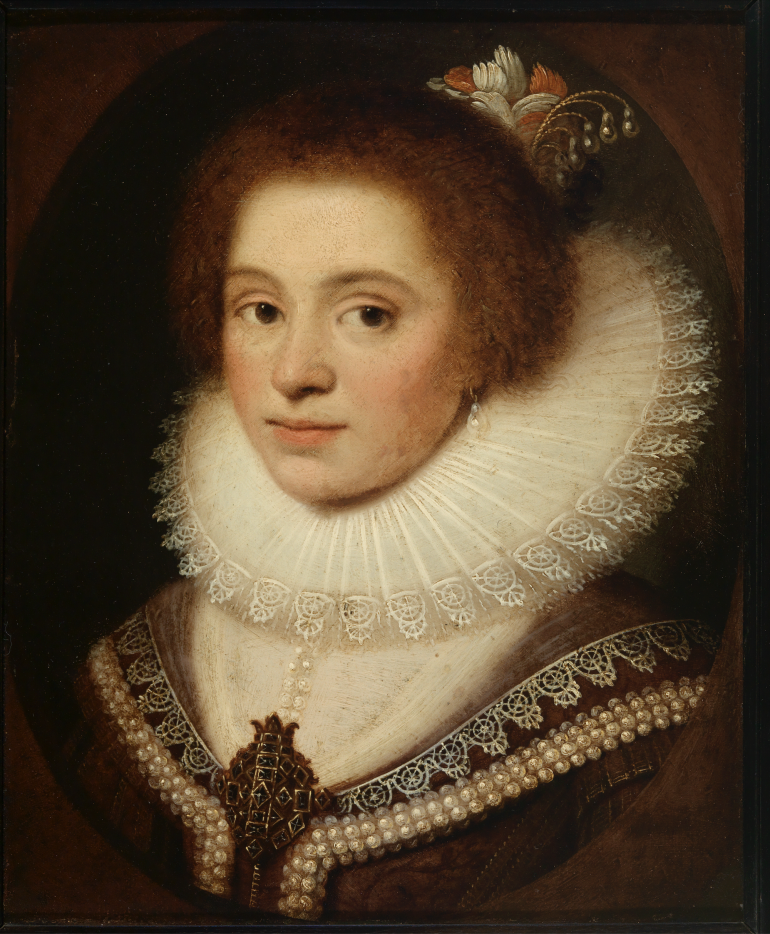In general, princes like marring pretty girls. In 1621, when the 19-year-old German princess Amalia von Solms (1602-1673) arrived in the Dutch Republic, she came as lady-in-waiting at the court of the ‘Winter King’, Frederick of Palts, and his wife, Elizabeth Stuart. Amalia was a ‘looker’. A year later, her beauty caught the eye of prince Frederick Henry of Orange (1584-1647), the younger half-brother of stadholder prince Maurits (1567-1625). In April 1625 the couple were married; two weeks later, Maurits died and Frederick Henry became the new stadholder, and Amalia one of the most famous women in the country. Later in the seventeenth century, after having four children, she became the matriarch of the Orange-Nassau dynasty.
Amalia, however, was not just another pretty face. While her husband opposed peace with the Spanish, Amalia operated informally behind the diplomatic scenes with the Portuguese and Spanish monarchs, which eventually helped end the Eighty-Years War in 1648. When it came to her children, she strategically arranged marriages aligning them with prominent royal families of Europe. While Amalia insisted her daughter Louise Henriette marry the elector of Brandenburg, her daughter, who was in love with the son of a French duke, bemoaned: “if only I was dead, or a farmer’s daughter. Then I could marry somebody I loved”. Louise Henriette married the elector. Amalia was an intelligent woman, but also tough as nails.
The exhibition “Amalia: Ambition with Allure” opened in September in Museum Prinsenhof in Delft and runs until 8 January 2023. The curator, Julia van Marissing, has carefully reconstructed the life of this strong-willed princess in an era when women took backstage to men. The exhibition features many paintings on loan from various major Dutch museums, but also from the private collection of the Royal Family, including ten portraits of Amalia and Frederick, some commissioned from painters such as Michiel van Mierevelt and Gerard van Honthorst. The museum also exhibits home furnishings such as a lacquered cabinet designed for Amalia, with marquetry on the doors alluding to the glorious future of Amalia’s grandson, the later William III. There is also porcelain (a common collector’s item in the seventeenth century), Amalia’s personal bible, and secret correspondence that she smuggled out of the palace. Amalia remains an intriguing woman. No doubt the reason the current Dutch crown princess was named after her.
Amalia: Ambition with Allure
Museum Prinsenhof
www.prinsenhof-delft.nl
Written by Benjamin B. Roberts
